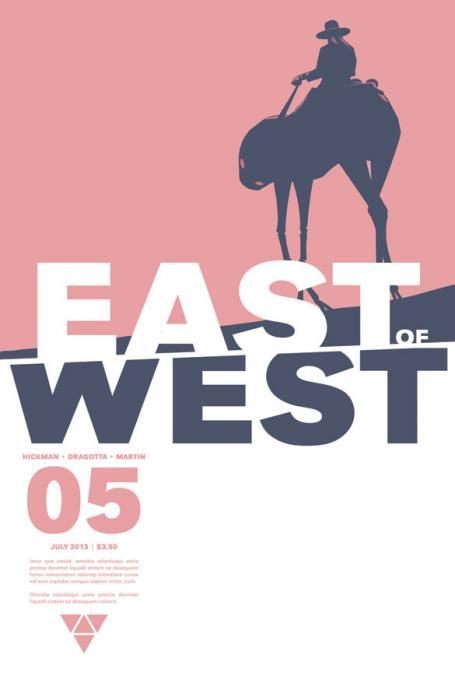In "East of West" #5 by Jonathan Hickman and Nick Dragotta, Death attempts to reconcile with his lost love Xiaolian, now the absolute ruler of New Shanghai, and elsewhere, Solomon and Chamberlain of The Chosen contemplate the end of the world.
The density of the storytelling in "East of West" has been both a strength and weakness since its debut. Hickman and Dragotta's world-building has been rapid over the introductory arc. A large cast has been introduced, woven within multiple connected storylines and settings. The particular fusion of genres is an unusual hybrid of alternative timeline, futuristic science fiction and fantasy, referencing religion and history.
In recent issues, the greater focus on the character of Death has shifted the narrative priorities a little from epic myth-making to characterization. Hickman's story in "East of West" #5 slows down the pace and narrows the scope of a sprawling world to focus on a pair of lovers, Death and Xiaolian, who finally have a heated face-to-face after years of separation and a siege on New Shanghai. Their story has echoed elements from Chinese mythology and folk stories in its focus on family and destiny, exile, rivalry and forbidden love. In "East of West" #5, the story instead takes a cue from Death's gunslinger character design and American Westerns. Xiaolian and Death meet in a garden called Tranquility for a scene of tears, yearning and recrimination, and Dragotta's intricate background heightens the emotions of the estranged lovers by its contrasting peacefulness.
The terrible aftermath of their Xiaolian and Death's first union and the initial details of their courtship are far more fascinating and original than their messy present-day partial reconciliation. While it's morbidly alluring to see Xiaolian flirt with Death by holding back on a kill, the tone verges close to melodrama in the scenes where "they tried to leave the world behind," precisely because of the lack of specificity.
In these domestic scenes, Xiaolian and Death feel closer to ordinary. Their love is humanizing, but they remain still larger than life, because predictably, they can't leave their old identities, nor escape the prophecy. The mundanity of domestic bliss for Death and Xiaolian is a double-edged sword. By depicting them as two lovers who simply want to settle down and have a family, their previous characterization and chemistry loses some power.
Nevertheless, overused generic sentiments can have power and resonance with the right execution, and the emotions of Xiaolian and Death's story are buoyed by Dragotta's visual pacing and page compositions and Martin's colors. The warmer reds, greens and grays of Xiaolian and Death are a deliberate contrast to the cold neon blue of Hickman's opening teaser and game-changing plot twist. Dragotta's visuals evoke shock, but the revelation itself about the origin of the Beast of the Apocalypse falls short of its intended impact, because there hasn't been enough previous build-up and foreshadowing to make the internal stakes matter deeply enough for the reader.
The attempt to dip into a more personal story within the epic framework of "East of West" #5 is only partially successful. Still, the tone, atmosphere and visuals of "East of West" are unlike any other book on the shelves, and it accomplishes more than enough of its ambitions to make it engrossing and worthwhile.

